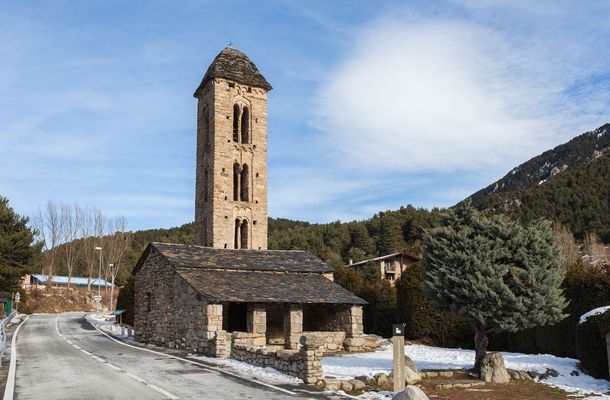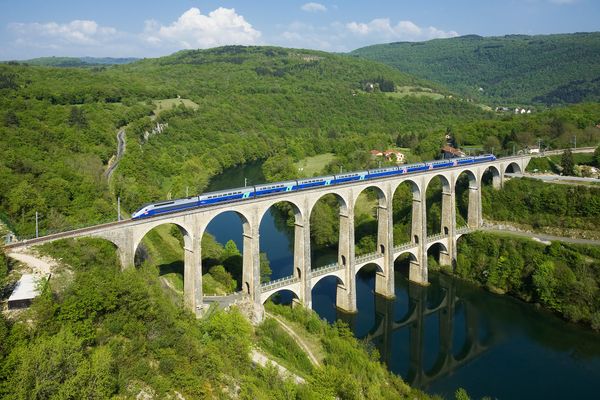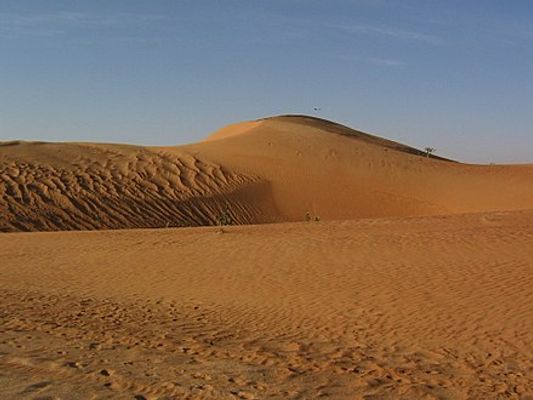
From Wikipedia: Spain (Spanish: España) shares the Iberian Peninsula with Andorra, Gibraltar, and Portugal. It has the second-largest number of UNESCO World Heritage Sites after Italy and the largest number of World Heritage Cities.
find another country
Who's been?
 #21
#21 #2
#2

Nearby countries
International Airports: LCG ALC LEI OVD BCN BIO CDT FUE GRO LPA GRX HSK IBZ XRY SPC ACE ILD MAD AGP MAH RMU PMI PNA REU SDR SCQ SVQ TFN VLC VLL VGO VIT ZAZ

Note to self
Grab a boat to the whistling island of Tenerife...One new year I flew into Zaragosa simply because it was cheap and there were trains for not too much to go to Barcelona. It turned out to be quite a nice little city. So if you are on a budget, and want to go to Barcelona, consider stopping off at this interesting little city.
More information on Wikivoyage.

Gaztelugatxe


Madrid
Average temperatures
Jan
10.4°C1.6Feb
12.5°C2.7Mar
16.5°C5.1Apr
18.3°C6.8May
22.6°C10.4Jun
28.9°C15.4Jul
32.8°C18.3Aug
32.2°C18.1Sep
27.3°C14.6Oct
20.4°C9.9Nov
14.3°C5.4Dec
10.7°C2.7
Barcelona
Average temperatures
Jan
15°C9Feb
16°C9Mar
17°C11Apr
19°C13May
23°C16Jun
26°C20Jul
29°C23Aug
29°C23Sep
26°C20Oct
23°C17Nov
18°C12Dec
15°C10
Bilbao
Average temperatures
Jan
13.4°C5.1Feb
14.3°C5.1Mar
16.5°C6.4Apr
17.6°C7.6May
20.8°C10.6Jun
23.4°C13.4Jul
25.4°C15.4Aug
26°C15.7Sep
24.6°C13.8Oct
21.4°C11.4Nov
16.6°C8.2Dec
13.9°C5.9
Málaga
Average temperatures
Jan
17°C7Feb
18°C8Mar
20°C10Apr
21°C11May
24°C14Jun
28°C18Jul
31°C21Aug
31°C21Sep
28°C19Oct
24°C15Nov
20°C11Dec
18°C9
Córdoba (city, Spain)
Average temperatures
Jan
14.9°C3.6Feb
17.4°C4.9Mar
21.3°C7.4Apr
22.8°C9.3May
27.4°C12.6Jun
32.8°C16.5Jul
36.9°C19Aug
36.5°C19.4Sep
31.6°C16.9Oct
25.1°C13Nov
19.1°C7.8Dec
15.3°C5.5
Granada
Average temperatures
Jan
12°C1Feb
14°C3Mar
17°C4Apr
19°C6May
23°C10Jun
29°C14Jul
34°C17Aug
33°C17Sep
28°C14Oct
21°C10Nov
16°C5Dec
13°C3
Seville
Average temperatures
Jan
16.2°C5.7Feb
18.1°C7Mar
21.9°C9.2Apr
23.4°C11.1May
27.2°C14.2Jun
32.2°C18Jul
36°C20.3Aug
35.5°C20.4Sep
31.7°C18.2Oct
26°C14.4Nov
20.2°C10Dec
16.6°C7.3
Valencia
Average temperatures
Jan
16.4°C7.1Feb
17.1°C7.8Mar
19.3°C9.7Apr
20.8°C11.5May
23.4°C14.6Jun
27.1°C18.6Jul
29.7°C21.5Aug
30.2°C21.9Sep
27.9°C19.1Oct
24.3°C15.2Nov
19.8°C10.8Dec
17°C8.1
Zaragoza
Average temperatures
Jan
10.5°C2.7Feb
13.1°C3.3Mar
17.3°C5.8Apr
19.6°C7.9May
24.1°C11.8Jun
29.3°C15.8Jul
32.4°C18.3Aug
31.7°C18.3Sep
27.1°C15.2Oct
21.4°C11Nov
14.8°C6.3Dec
10.8°C3.2
Galicia
Average temperatures
Jan
°CFeb
°CMar
°CApr
°CMay
°CJun
°CJul
°C
Gran Canaria
Average temperatures
Jan
21°C15Feb
21°C16Mar
22°C16Apr
23°C16May
24°C17Jun
25°C19Jul
27°C21Aug
28°C22Sep
27°C21Oct
26°C20Nov
24°C18Dec
22°C17
Ibiza
Average temperatures
Jan
15.7°C8.1Feb
15.9°C8.3Mar
17.7°C9.6Apr
19.7°C11.4May
22.7°C14.6Jun
26.8°C18.4Jul
29.7°C21.4Aug
30.3°C22.2Sep
27.7°C19.9Oct
24°C16.5Nov
19.6°C12.3Dec
16.7°C9.5
Mallorca
Average temperatures
Jan
15°C8Feb
16°C8Mar
17°C10Apr
19°C12May
23°C15Jun
27°C19Jul
29°C22Aug
30°C23Sep
27°C20Oct
24°C17Nov
19°C12Dec
17°C10
Sierra Nevada (Spain)
Average temperatures
Jan
0.3°C-6.1Feb
-0.9°C-7.9Mar
0.6°C-7.5Apr
3.2°C-4.3May
4.6°C-2.9Jun
14.9°C5.6Jul
21.6°C11.9Aug
19.8°C10.6Sep
14.2°C5.7Oct
10.4°C2.2Nov
3.5°C-3.3Dec
2.6°C-4
Tenerife
Average temperatures
Jan
19°C14Feb
20°C13Mar
21°C14Apr
22°C14May
23°C15Jun
25°C17Jul
28°C19Aug
29°C20Sep
28°C20Oct
26°C19Nov
23°C17Dec
20°C15
Cádiz
Average temperatures
Jan
16°C9.4Feb
16.8°C10.7Mar
18.8°C12.3Apr
19.9°C13.7May
22.1°C16.2Jun
25.3°C19.5Jul
27.7°C21.4Aug
27.9°C22Sep
26.3°C20.3Oct
23.4°C17.3Nov
19.6°C13.4Dec
16.9°C10.9
Girona
Average temperatures
Jan
13.1°C1.1Feb
14.1°C1.7Mar
16.7°C4.1Apr
18.8°C6.2May
22.4°C10.1Jun
26.6°C14.3Jul
30.1°C17.1Aug
29.8°C17Sep
26.1°C14.1Oct
21.8°C10.5Nov
16.6°C5.4Dec
13.6°C2






,_by_Klugschnacker_in_Wikipedia_(86)_JPG_1280px-Praia_da_Marinha_(2012-09-27),_by_Klugschnacker_in_Wikipedia_(86).JPG)
_jpg_2560px-Souk,_Marrakech_(2242326899).jpg)

